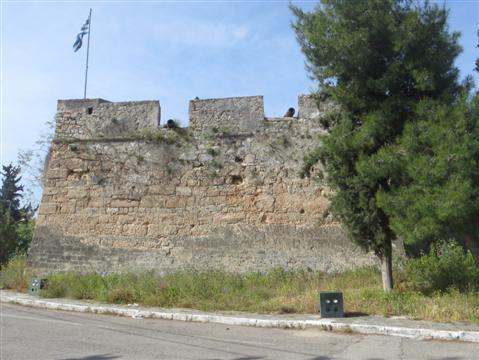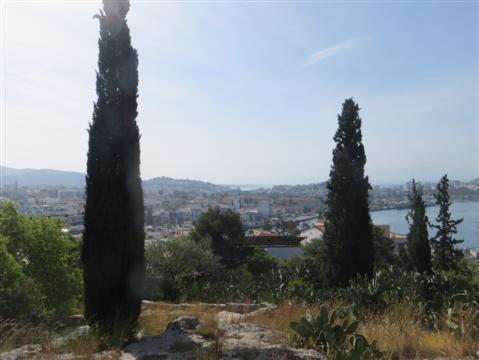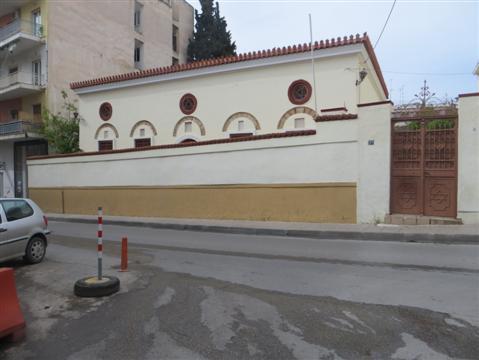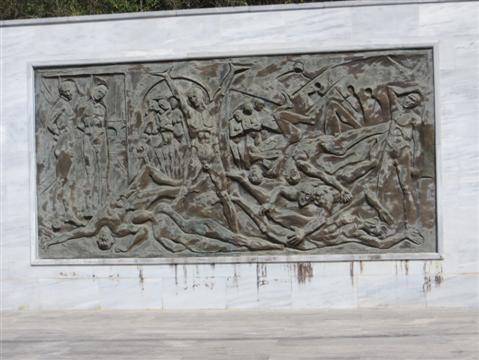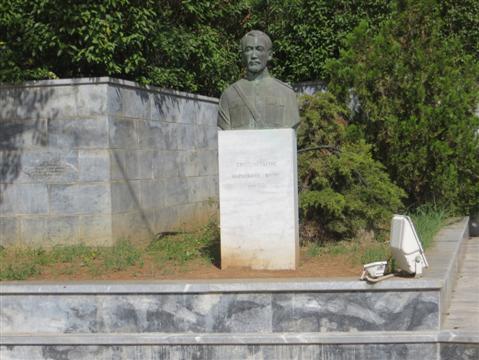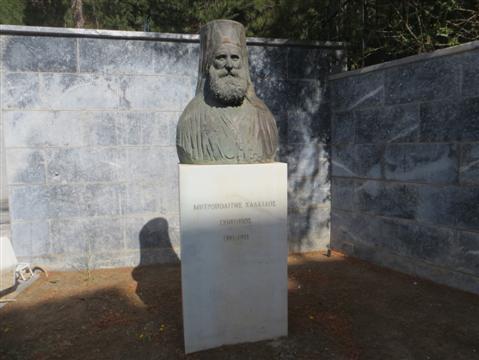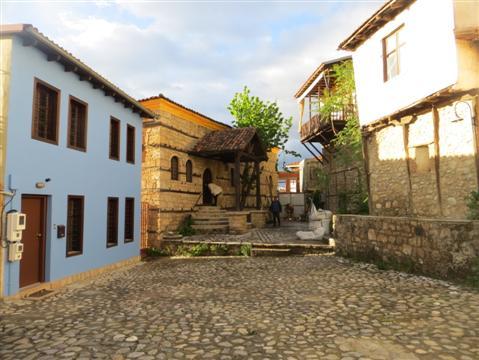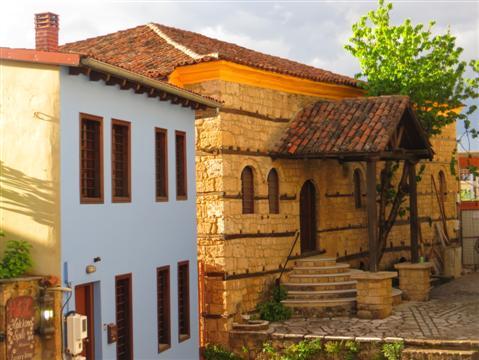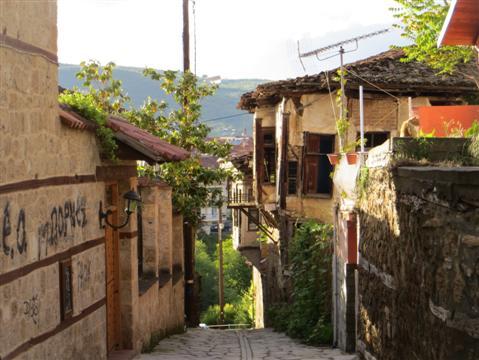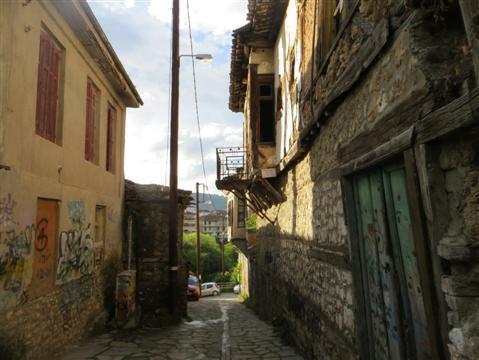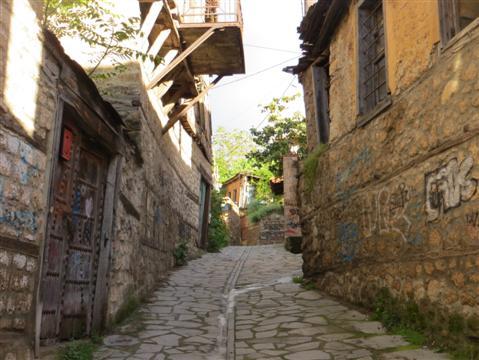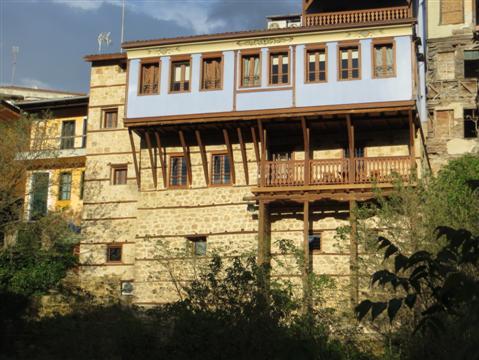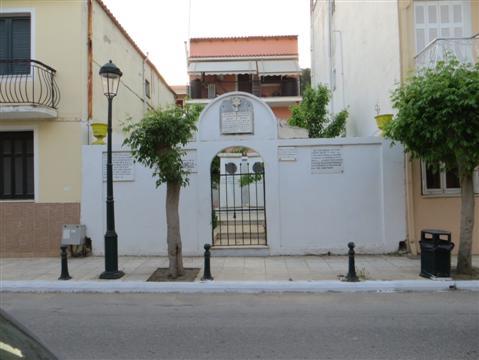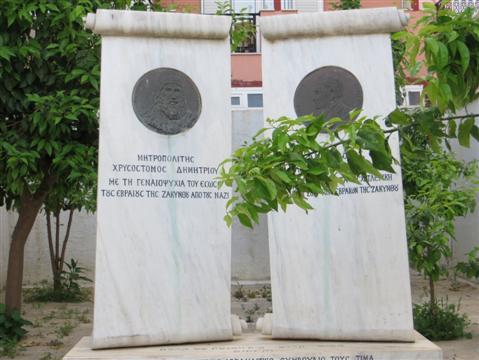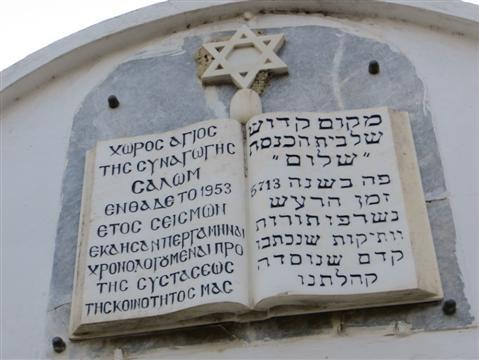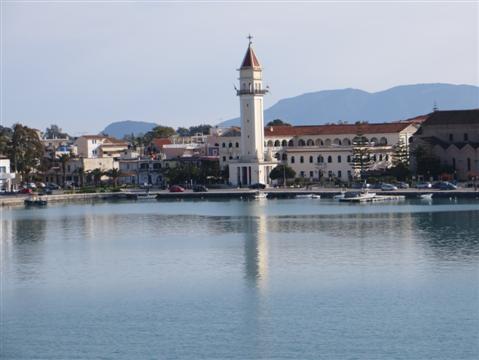It is not only Salonika, the major intellectual and cultural centre of Greek Jewry for over two millennia, or the ancient community of Rhodes, nor such famous members as Colonel Mordechai Frizis, the officer who fought valiantly against the Italian invasion in 1940, that recall how widespread Greece's Jewish community was before the German Holocaust.
It is the traces of the smaller centres that one finds wherever one goes throughout the length and breadth of the land that really bring home the community's vibrant ubiquity and strength.
Halkida fort, near where old Jewish quarter stood
Jews first established themselves in Greece in the centuries immediately preceding Christ. Some believe they may have started arriving after the destruction of the first temple by the Babylonian King Nebuchadnezzar in 586 B.C. Some archaeologists believe they have found remnants of synagogues in such places as Athens and Delos dating back to 150 B.C.
Be that as it may, there was already a vibrant community of Jews in Salonika when Paul visited round about the year 50 of the common era, as mentioned in the New Testament Book of Acts.
These original Greek Jews are known as Romaniots, to be distinguished from the waves of Sephardi immigrants who flooded in after the expulsion of Jews from Spain and Portugal in 1492. The newcomers eventually swamped them, though small Romaniot communities still remained.
View over Halkida from fort
On a recent trip through Greece Yours Truly randomly came across three such Jewish centres.
Halkida, about 50 miles from Athens on Evia, Greece's second largest island, was home to Colonel Frizis, a Romaniot Jew who has bequeathed his name to a street, a square and a statue. A 15th century mosque, a 19th century synagogue and many Greek Orthodox churches testify to the city's multicultural traditions.
The small white red-roofed 19th century synagogue is the sixth built on the same spot, the earlier ones having been destroyed by earthquakes or fires. The Jewish community here is reputed by some to be the oldest in Greece, believed to date back to 586 B.C. The Jewish philosopher Philo of Alexandria, born in 20 B.C., mentions the community.
Halkida synagogue
A Jewish quarter once existed next to the Kastro, the old Byzantine/Venetian castle, across the narrow strait on the mainland side, and the eastern gate of the old town walls, demolished by city planners over 100 years ago, was called the Gate of the Jews.
On the island side, beyond the large general hospital, a beautiful walled grove of pine trees encloses the Jewish cemetery. In front of it on a marble wall a large bronze relief with naked bodies, hanged, tortured and otherwise slaughtered, commemorates the Holocaust. On the right side in Hebrew are the bronze words of the eternal prayer: 'Hear, O Israel, the Lord our God, the Lord is one.'
Holocaust memorial
Memorial detail
There are busts on either side: one of Frizis, the other of Halkida's Orthodox Metropolitan Gregorios, who tried to save as many Jews as he could. Before the war there were 325 Jews here; 155 were deported and killed. Today the community numbers about 100.
Bust of Mordechai Frizis
Bust of Metropolitan Gregorios
To the north on the mainland in Macedonia, close to Pella, the ancient capital of Alexander the Great, the hillside town of Veria (also known as Berea), a major Macedonian city 2,000 and more years ago, had one of the oldest Jewish communities outside Judaea.
Barbouta Jewish quarter
According to the New Testament, Paul went to the synagogue to try to convert the Jews in the year 55 or so. The Book of Acts says they were quite receptive to his preachings that Jesus was the Messiah until the larger Jewish community in Salonika, who had already kicked him out because they were 'jealous,' got wind of it and had him booted out of Veria too.
Synagogue lane
These Jews were Romaniots, of course, but most recently Veria's Jews were mainly Sephardim. They lived in Barbouta, a colourful quarter with a picturesque stone synagogue and quaint Ottoman-style houses on hilly lanes in pastel shades of blue, red-brown and yellow with red roofs and wooden balconies.
Veria Synagogue
Today only the buildings remain, as does a city sign in Greek and English pointing the way to the 'Jewish Quarter.' What neither Paul could convert with words nor the Spaniards with torture and expulsion, the Germans annihilated in Auschwitz. In all up to 67,000 Greek Jews, some 85 percent of the total, were massacred by the Germans and their acolytes, 650 of them from Veria.
Lane in the Jewish quarter
Another lane
And another
The stone synagogue, Sephardi and dating from the 16th century, is shuttered pending conversion into a museum.
Today the steep little stone lanes on a hillside by a narrow tree-clad ravine over a rushing river resound to the laughter of other children cycling past. Not far from the shuttered synagogue a sign over a doorway announces another religion, the Pentecostal Church.
Way to the west in the Ionian Sea, the island of Zakynthos once had a thriving centuries-old Jewish community. In 1944 the Nazis ordered Mayor Loukas Carrer at gunpoint to hand over a list of all Jews on the island for deportation to the death camps.
Zakynthos synagogue site and tribute to two 'righteous' men
The mayor handed over a list with only two names - his own and that of Orthodox Metropolitan Chrysostomos, who told the Germans: 'Here are your Jews. If you choose to deport the Jews of Zakynthos, you must also take me and I will share their fate.' Meanwhile they hid the 275 Jews in mountain villages and all survived the war, many later going to Israel.
Synagogue monuments to Zakynthos mayor and priest
The whole island knew of the hiding places but, contrary to the case of Anne Frank, nobody ratted. Pillars with medallions of the two now stand on the site of Zakynthos's synagogue, founded in 1489 but destroyed in the massive earthquake of 1953 that levelled much of the town. The first boat to bring aid to the quake victims was from Israel, with the message: 'The Jews of Zakynthos have never forgotten their Mayor or their beloved Bishop and what they did for us.'
Recording synagogue's destruction in 1953 quake
Both Mayor and Bishop are now included in the 'Righteous Among Nations' in Israel's Yad Vashem Holocaust Memorial in Jerusalem.
By contrast, of 2,000 Jews on nearby Corfu, 1,800 were deported and only 170 survived.
Today about 8,000 Jews are estimated to live in Greece.
Again, mainly just memories.
By the same author: Bussing The Amazon: On The Road With The Accidental Journalist, available on Kindle, with free excerpts at http://www.amazon.com/dp/B00KNCGD9M and in print version on Amazon at http://www.amazon.com/dp/1499681984:
And Swimming With Fidel: The Toils Of An Accidental Journalist, available on Kindle, with free excerpts here, and in print version on Amazon in the U.S here.
